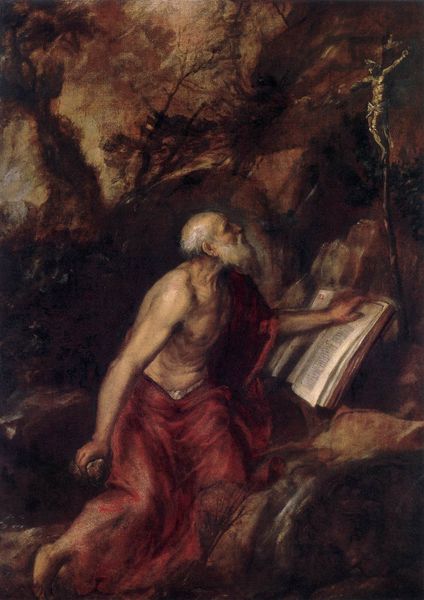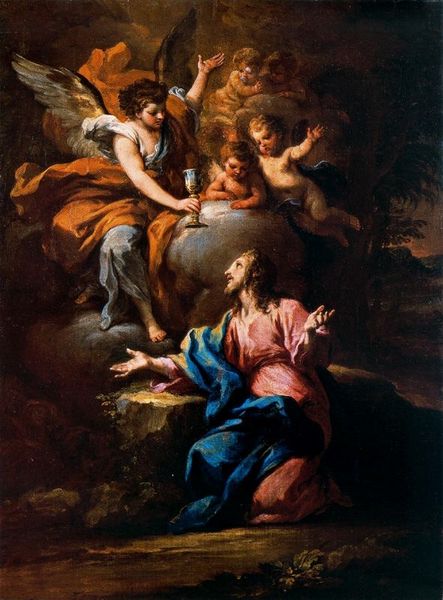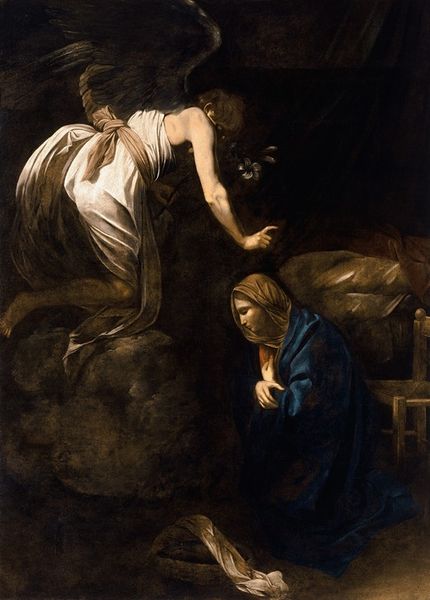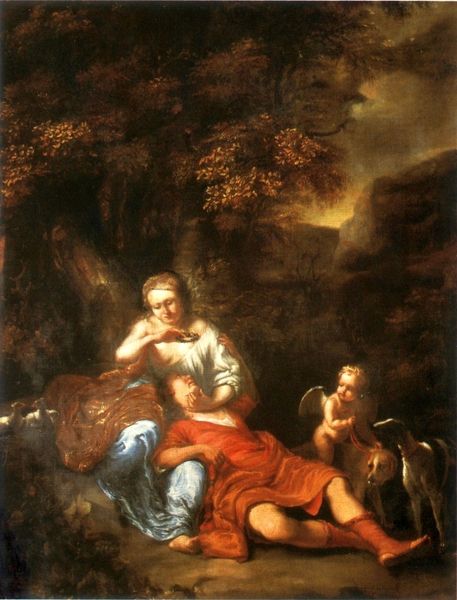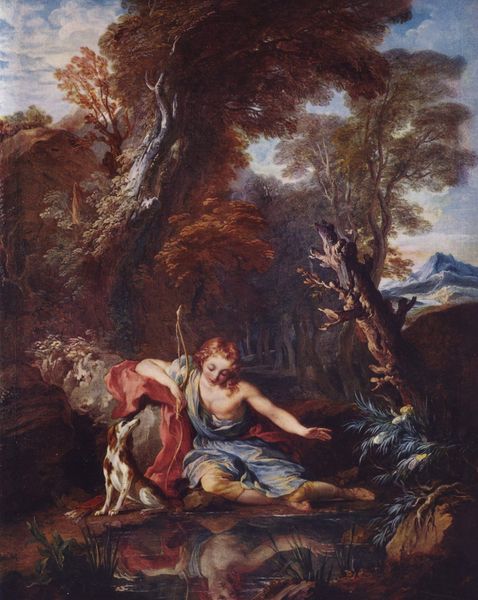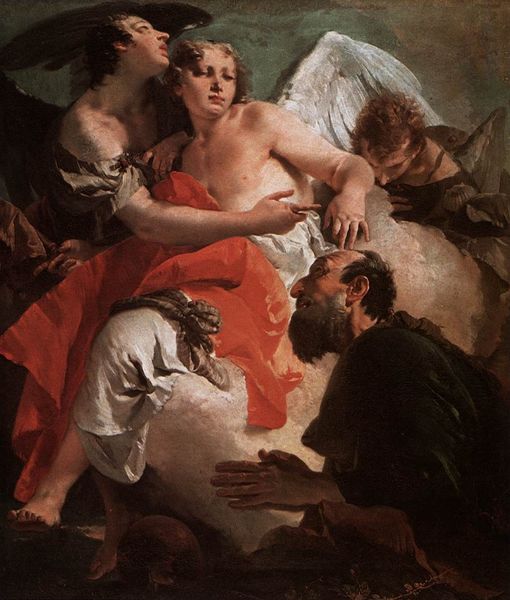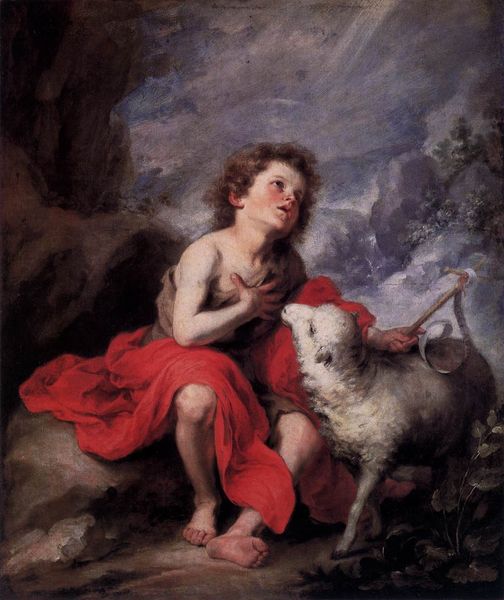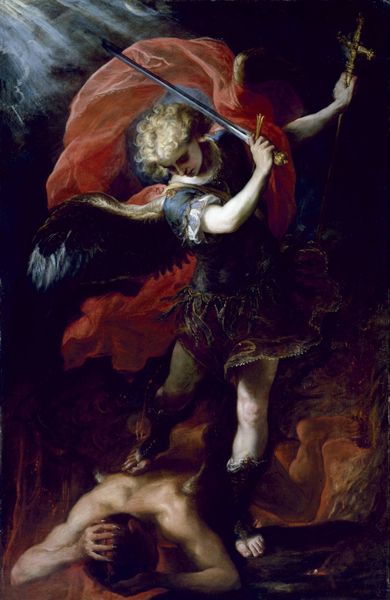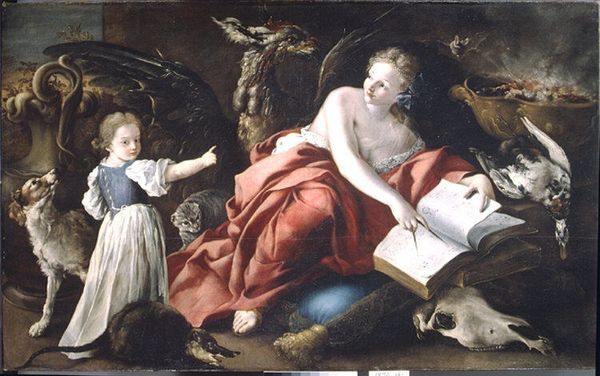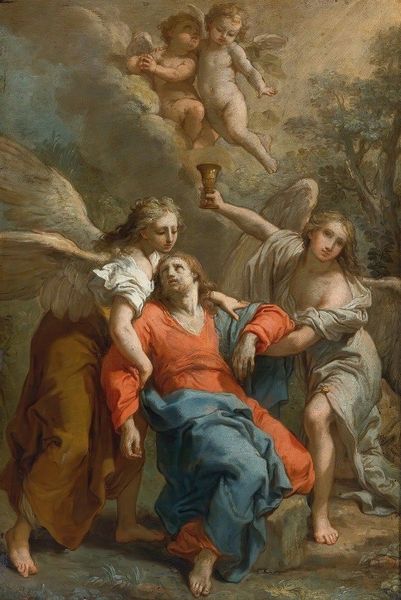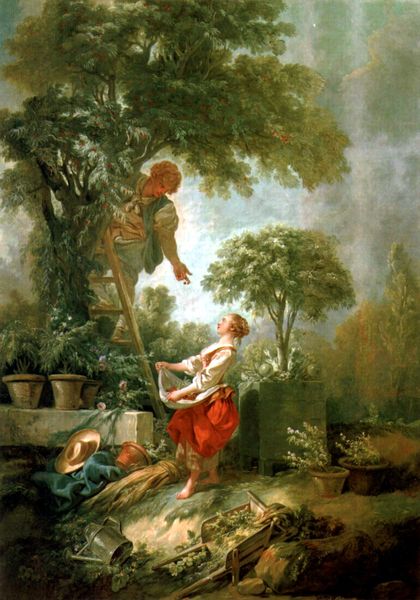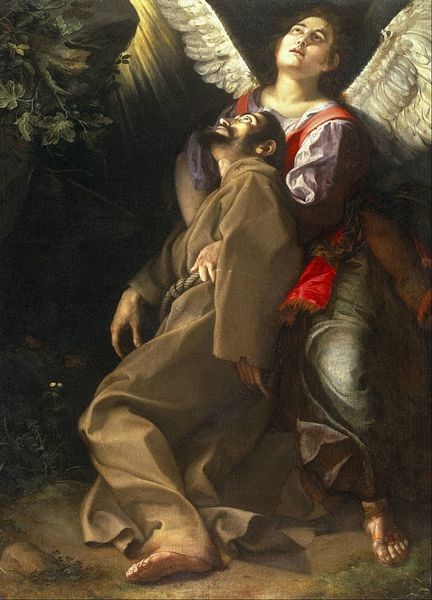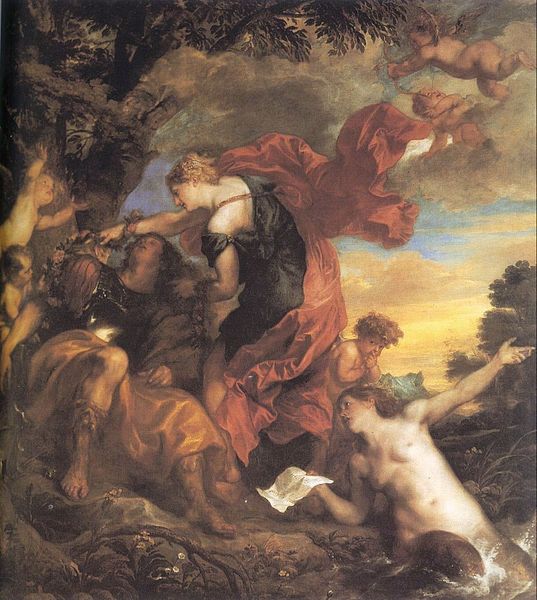
painting, oil-paint
#
portrait
#
baroque
#
painting
#
oil-paint
#
oil painting
#
history-painting
#
portrait art
Copyright: Public domain
Curator: This painting before us is Giambattista Pittoni's *The Penitent Magdalene*, an oil on canvas created around 1740. Editor: The dramatic lighting immediately strikes me. It’s such a baroque trope, spotlighting the subject's emotion against the dark background. It evokes a sense of both isolation and intense interiority. Curator: Yes, the chiaroscuro emphasizes the drama of repentance. Notice how the skull, open book, and crucifix all point to common symbols representing mortality, scripture, and salvation. The Magdalene has an illuminated figure of deep contrition in the Christian canon. Editor: And I can't help but think about how the image of the "penitent Magdalene" has been used historically to control female sexuality, associating female desire with sin and requiring ultimate submission through repentance. Is she truly in control of her image, or is she made into an emblem? Curator: The cherubic figures offer her solace and communicate divine forgiveness, framing her sorrowful moment within divine acceptance. The presence of angels is a conventional method used to communicate direct divine acceptance of contrition for sin. They emphasize the painting's objective as more devotional, a scene of forgiveness, which also highlights what one scholar termed "eroticized mourning." Editor: Precisely. It's uncomfortable. There is so much beauty constructed through the weeping, lamenting, often nude, female body, right? Are we to find it beautiful too? Pittoni, though masterful, taps into this troubling history. Curator: The artist captured the height of spiritual experience in her bowed head and embrace of the crucifix; her story, one of profound change and divine reconciliation. Editor: Change born of social pressures and religious doctrines. It makes me think about modern performative activism – are acts like the Magdalene's truly born of freedom? I still admire the painterly qualities and the evocation of a certain period; that said, I keep wondering about that complex gaze, still implicated today in religion. Curator: Indeed, engaging with art always sparks these important questions. Editor: Definitely, looking closely reveals a story we are still unpacking.
Comments
No comments
Be the first to comment and join the conversation on the ultimate creative platform.
